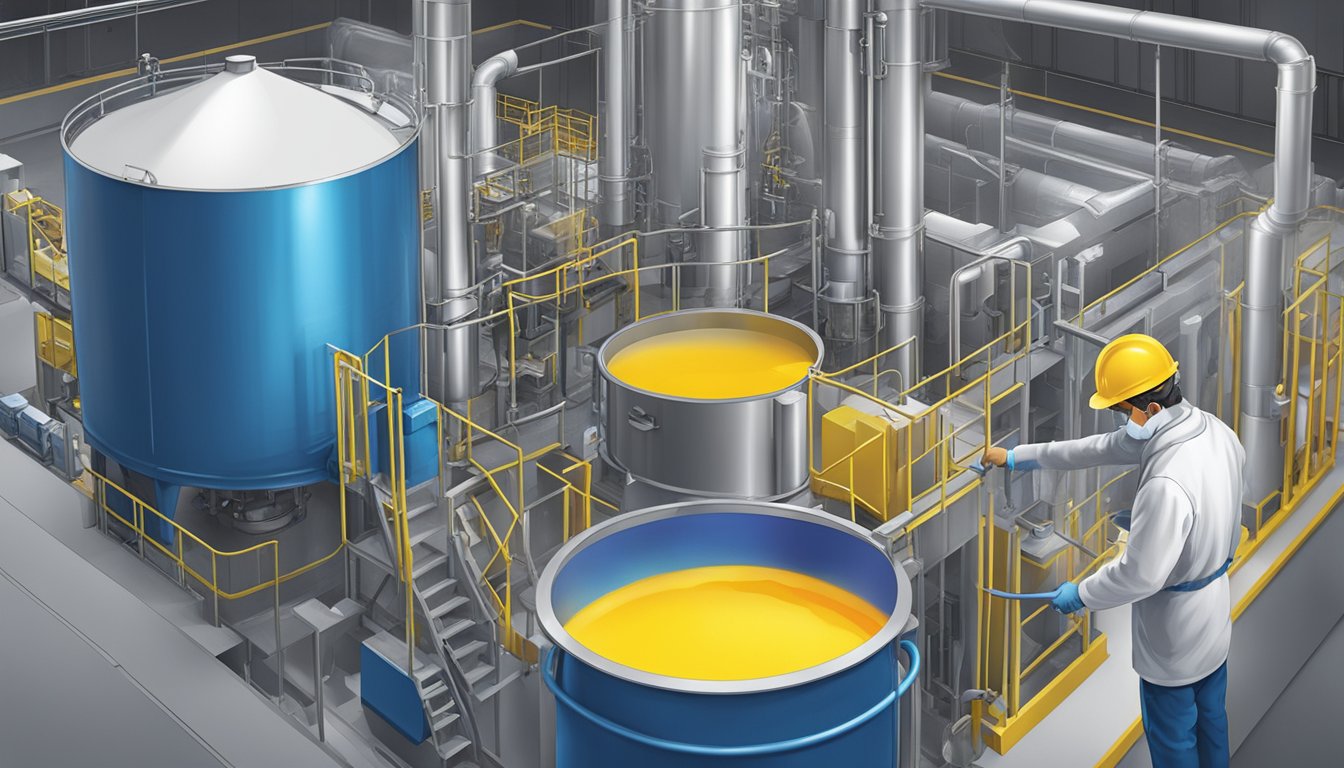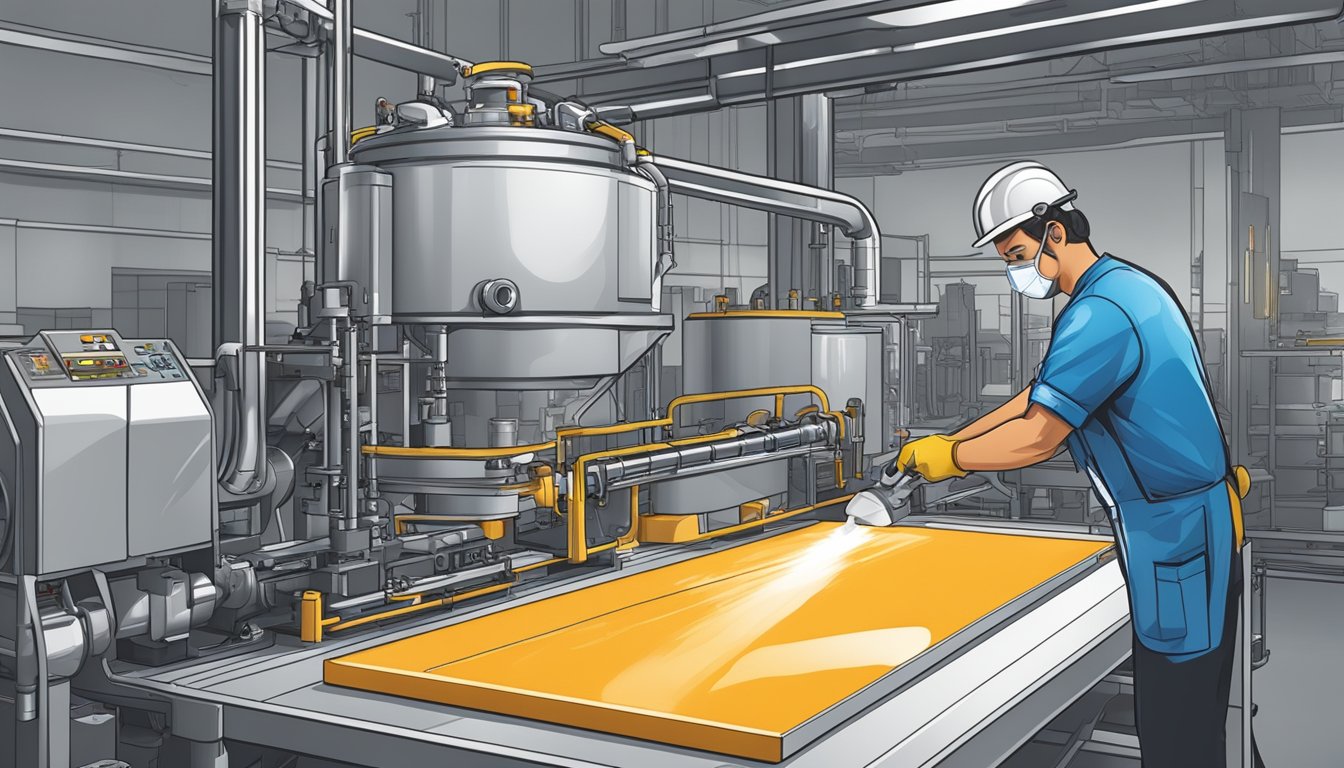C5 Hydrocarbon Resin: Versatile Uses in Various Industries
19/01/2024
C5 hydrocarbon resin is a type of aliphatic hydrocarbon resin that is used in a wide range of industrial applications. This resin is produced from C5 fractions, which are obtained during the refining of crude oil. The resin has a tackifying effect and is suitable for use in paint, printing ink, adhesives, rubber, and other areas where tackiness is required. C5 hydrocarbon resin is an important ingredient in many products, and its versatility makes it a popular choice for many different applications.

The chemical composition of C5 hydrocarbon resin is what gives it its unique properties. The resin is made up of oligomers of isoprene, which are aliphatic hydrocarbons. These oligomers are responsible for the tackifying effect of the resin, making it an essential ingredient in many adhesives and coatings. The resin also contains dicyclopentadiene, which is an aromatic hydrocarbon that gives it its reinforcing properties.
C5 hydrocarbon resin is used in a wide range of applications, including adhesive applications, coatings and paints, rubber and tire industry, printing inks, plastics modification, asphalt modification, and other applications. Its versatility and unique properties make it an important ingredient in many different products.
Chemical Composition of C5 Hydrocarbon Resin

C5 hydrocarbon resin is a type of thermoplastic resin that is derived from the polymerization of C5 fraction of petroleum. The C5 fraction is obtained during the refining of crude oil and consists of hydrocarbons with 5 carbon atoms. The resin is a colorless to light yellow solid with a softening point between 80°C to 110°C.
C5 hydrocarbon resin is composed of a mixture of aliphatic and aromatic hydrocarbons. The aliphatic hydrocarbons are oligomers of isoprene and are responsible for the tackifying properties of the resin. The aromatic hydrocarbons are oligomers of styrene and dicyclopentadiene and are responsible for the reinforcing properties of the resin. The ratio of aliphatic to aromatic hydrocarbons in the resin determines its performance properties.
The resin is soluble in aliphatic and aromatic solvents, such as mineral spirits, toluene, and xylene. It has good compatibility with natural tackifying resins, such as terpenes and rosin, and can be used to modify their properties. The resin is also compatible with synthetic resins, such as styrene-butadiene and polyisoprene, and can be used to improve their adhesion and tackiness.
In summary, C5 hydrocarbon resin is a thermoplastic resin that is derived from the C5 fraction of petroleum. It is composed of a mixture of aliphatic and aromatic hydrocarbons that determine its performance properties. The resin is soluble in aliphatic and aromatic solvents and has good compatibility with natural and synthetic resins.
Adhesive Applications

C5 hydrocarbon resin is a popular ingredient in the formulation of various types of adhesives. Its tackifying properties make it an ideal choice for use in hot-melt and pressure-sensitive adhesives.
Hot-Melt Adhesives
Hot-melt adhesives are widely used in the packaging, bookbinding, and woodworking industries. C5 hydrocarbon resins are often used in hot-melt adhesive formulations due to their excellent adhesion properties, compatibility with other ingredients, and high melting point. C5 resins can improve the cohesion and adhesion of hot-melt adhesives, resulting in a stronger bond between substrates.
Pressure-Sensitive Adhesives
Pressure-sensitive adhesives are commonly used in labels, tapes, and other applications where a strong adhesive bond is needed. C5 hydrocarbon resins are often used in pressure-sensitive adhesive formulations due to their excellent tackiness and adhesion properties. They can improve the peel strength, tack, and adhesion of pressure-sensitive adhesives, resulting in better performance on a variety of substrates.
Overall, C5 hydrocarbon resins are a versatile ingredient in the formulation of adhesives, providing improved adhesion and tackiness to a variety of substrates.
Coatings and Paints

C5 hydrocarbon resins are widely used in coatings and paints due to their excellent compatibility with various solvents, pigments, and other resins. They offer various benefits such as high gloss, improved adhesion, and excellent weather resistance.
Protective Coatings
C5 hydrocarbon resins are used in protective coatings to improve their durability and resistance to weathering and chemicals. They provide excellent adhesion to metal, concrete, and other surfaces, making them ideal for use in industrial coatings, marine coatings, and other protective coatings.
In addition, C5 hydrocarbon resins can be used to modify the viscosity of coatings, which helps to improve their application properties. They can also improve the hardness and abrasion resistance of coatings, making them ideal for use in heavy-duty coatings.
Decorative Paints
C5 hydrocarbon resins are also used in decorative paints to improve their gloss and flow properties. They can be used in various types of decorative paints such as enamels, lacquers, and varnishes.
C5 hydrocarbon resins can also be used to improve the adhesion of decorative paints to various substrates such as wood, metal, and plastic. They can also improve the scratch resistance of decorative paints, making them ideal for use in high-traffic areas.
Overall, C5 hydrocarbon resins are versatile additives that can be used in various types of coatings and paints. They offer various benefits such as improved adhesion, excellent weather resistance, and high gloss, making them ideal for use in various industrial and decorative applications.
Rubber and Tire Industry
C5 hydrocarbon resin is widely used in the rubber and tire industry as a tackifier and reinforcement agent. The resin improves the tackiness of rubber compounds and enhances the adhesion between rubber and other materials. In this section, we will discuss two of the most common uses of C5 hydrocarbon resin in the rubber and tire industry: tire enhancement and rubber compounding.
Tire Enhancement
C5 hydrocarbon resin is commonly used in tire tread formulations to improve the performance of the tire. The resin can be used as a partial or full replacement for TDAE oil, which is a commonly used process oil in tire manufacturing. In a study conducted by ScienceDirect, five different commercial hydrocarbon resins were evaluated as an alternative to TDAE oil in a passenger car tire tread formulation. The study found that the resins improved the in-rubber properties of the tire compounds and showed good compatibility with other components in the formulation.
Rubber Compounding
C5 hydrocarbon resin is also commonly used as a tackifier and reinforcement agent in rubber compounding. The resin improves the tackiness of rubber compounds and enhances the adhesion between rubber and other materials. In addition, C5 hydrocarbon resin can be used as a softening agent to improve the flexibility of rubber compounds. According to Allied Market Research, C5 resins are an excellent source of tackifying, reinforcement, and homogenizing agents, due to which they are widely used in the rubber compounding industry.
In conclusion, C5 hydrocarbon resin is a versatile ingredient that has a wide range of uses in the rubber and tire industry. The resin improves the tackiness of rubber compounds, enhances the adhesion between rubber and other materials, and can be used as a softening agent to improve the flexibility of rubber compounds.
Printing Inks
Printing inks are a major application area for C5 hydrocarbon resins. These resins are used as binders in printing inks to improve adhesion, gloss, and printability. The following subsections will discuss the use of C5 hydrocarbon resins in offset and gravure inks.
Offset Inks
Offset printing is a widely used printing technique that involves transferring an image from a plate to a rubber blanket and then to the printing surface. C5 hydrocarbon resins are used as binders in offset inks to improve ink transfer and to prevent smudging. These resins are also used to improve the gloss and drying time of offset inks.
Gravure Inks
Gravure printing is a high-speed printing process that involves engraving an image onto a cylinder and then transferring the ink onto the printing surface. C5 hydrocarbon resins are used as binders in gravure inks to improve adhesion, gloss, and printability. These resins are also used to improve the drying time and viscosity of gravure inks.
In summary, C5 hydrocarbon resins are widely used in printing inks to improve adhesion, gloss, printability, and drying time. They are used as binders in offset and gravure inks to enhance ink transfer and prevent smudging.
Plastics Modification
C5 hydrocarbon resins are widely used in the modification of plastics, which improves their physical and chemical properties. In this section, we will discuss the two main uses of C5 hydrocarbon resins in plastics modification: plastic additives and plastic films.
Plastic Additives
C5 hydrocarbon resins are used as plastic additives to improve the properties of plastics. They are added to plastics during the manufacturing process to enhance their adhesion, tackiness, and viscosity. The addition of C5 hydrocarbon resins also improves the toughness, flexibility, and heat resistance of plastics.
C5 hydrocarbon resins are used as a substitute for natural resins such as rosin, which can be expensive and difficult to obtain. They are also used as a substitute for other synthetic resins such as phenolic resins, which can be toxic and have poor compatibility with other materials.
Plastic Films
C5 hydrocarbon resins are also used in the production of plastic films. They are added to the film formulation to improve the film’s properties such as adhesion, clarity, and flexibility. The addition of C5 hydrocarbon resins also improves the film’s resistance to heat, moisture, and chemicals.
The use of C5 hydrocarbon resins in plastic films is particularly important in the food packaging industry. The resins are used to produce films that are safe for food contact and can withstand the harsh conditions of the food packaging environment. C5 hydrocarbon resins are also used in the production of agricultural films, which protect crops from pests, weather, and other environmental factors.
In conclusion, C5 hydrocarbon resins are widely used in the modification of plastics. They are used as plastic additives to improve the properties of plastics and as a key component in the production of plastic films.
Asphalt Modification
C5 hydrocarbon resin is widely used in the modification of asphalt for road construction and roofing materials. The addition of C5 hydrocarbon resin to asphalt can improve its adhesive properties, increase its softening point, and enhance its resistance to aging and weathering.
Road Construction
In road construction, C5 hydrocarbon resin is used as a tackifier to improve the adhesion between asphalt and aggregate. It can also be used as a modifier to enhance the performance of asphalt in various ways. For example, it can increase the stiffness of the asphalt and improve its resistance to rutting, cracking, and fatigue. It can also reduce the viscosity of the asphalt and improve its workability and compaction.
Roofing Materials
In roofing materials, C5 hydrocarbon resin is used as a modifier to improve the durability and weatherability of asphalt shingles, roll roofing, and built-up roofing. It can also improve the adhesion between asphalt and the substrate, such as wood, metal, or concrete. Additionally, it can enhance the fire resistance and UV resistance of the roofing materials.
Overall, C5 hydrocarbon resin is a versatile and effective additive for asphalt modification in various applications. Its unique chemical structure and properties make it a valuable tool for improving the performance and durability of asphalt-based products.
Other Applications
In addition to the applications discussed earlier, C5 hydrocarbon resin is also used in various other industries. Here are some of the most common applications:
Adhesive Tapes
C5 hydrocarbon resin is a popular ingredient in adhesive tapes due to its excellent tackiness and adhesion properties. It helps improve the bond strength and durability of tapes, making them ideal for use in packaging, labeling, and other applications. Additionally, C5 hydrocarbon resin is resistant to water and heat, making it suitable for use in harsh environments.
Sealants
C5 hydrocarbon resin is also used in the production of sealants for various applications. It helps improve the viscosity and flow properties of sealants, making them easier to apply and more effective at sealing gaps and cracks. Additionally, C5 hydrocarbon resin helps improve the adhesion and cohesion properties of sealants, ensuring a strong and durable bond.
Other applications of C5 hydrocarbon resin include the production of printing inks, coatings, and rubber products. Its versatility and unique properties make it a popular choice for various industries. However, it is important to note that the specific properties and characteristics of C5 hydrocarbon resin can vary depending on the manufacturing process and other factors. Therefore, it is important to choose a high-quality C5 hydrocarbon resin that is specifically designed for your intended application.




